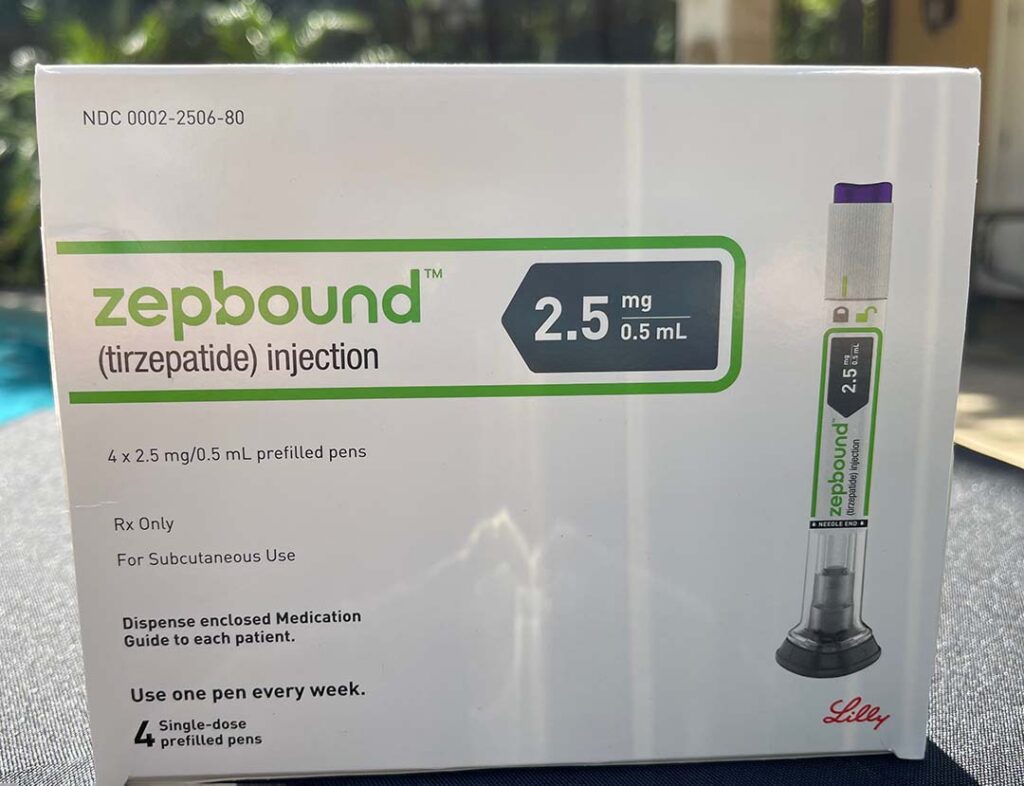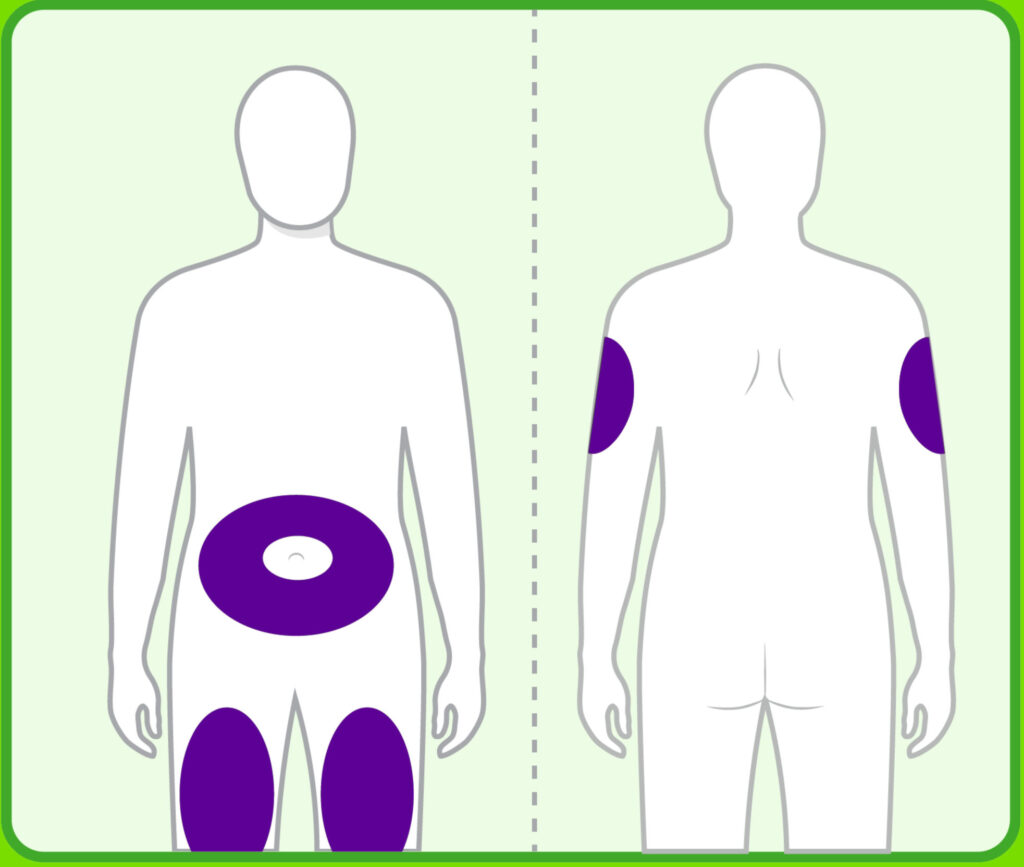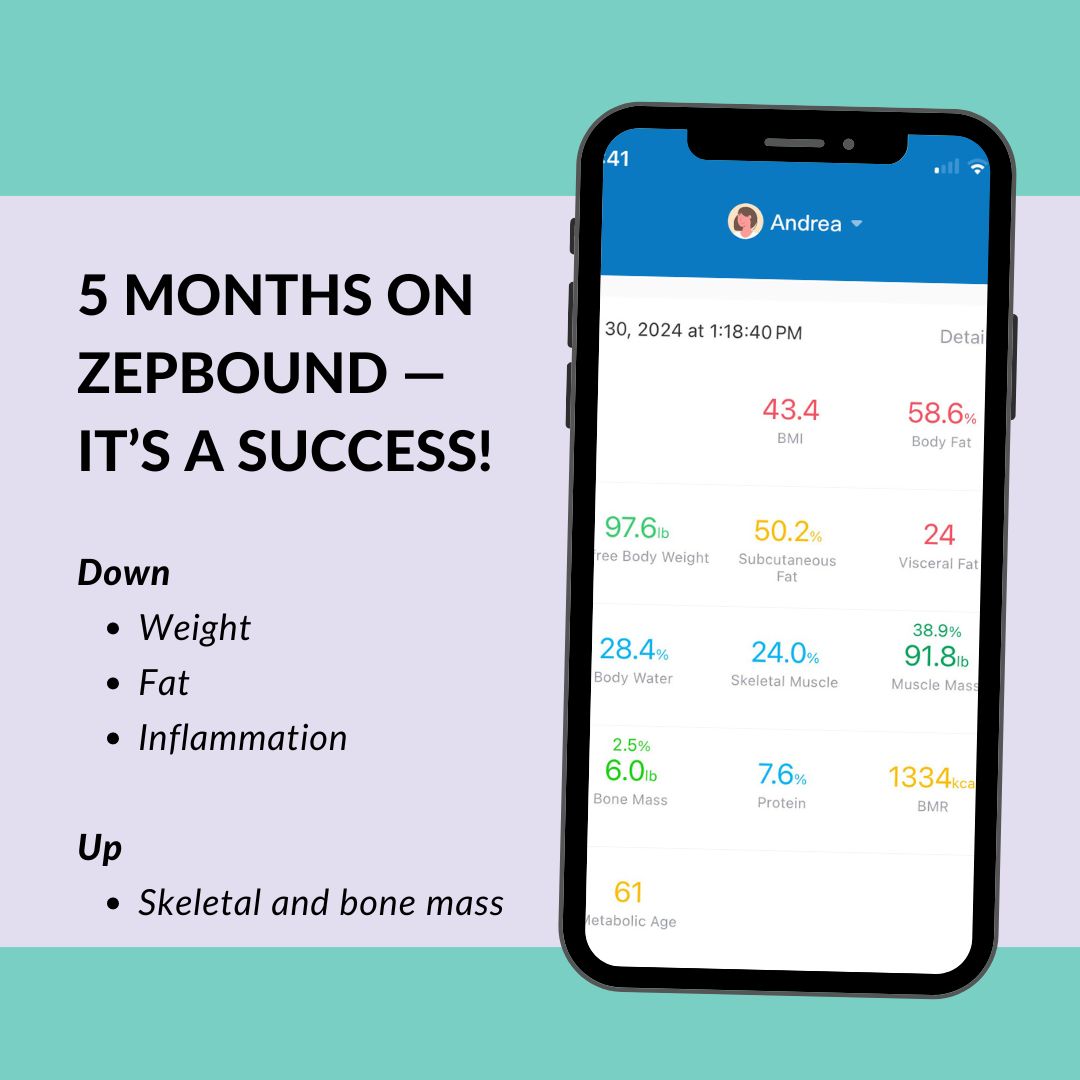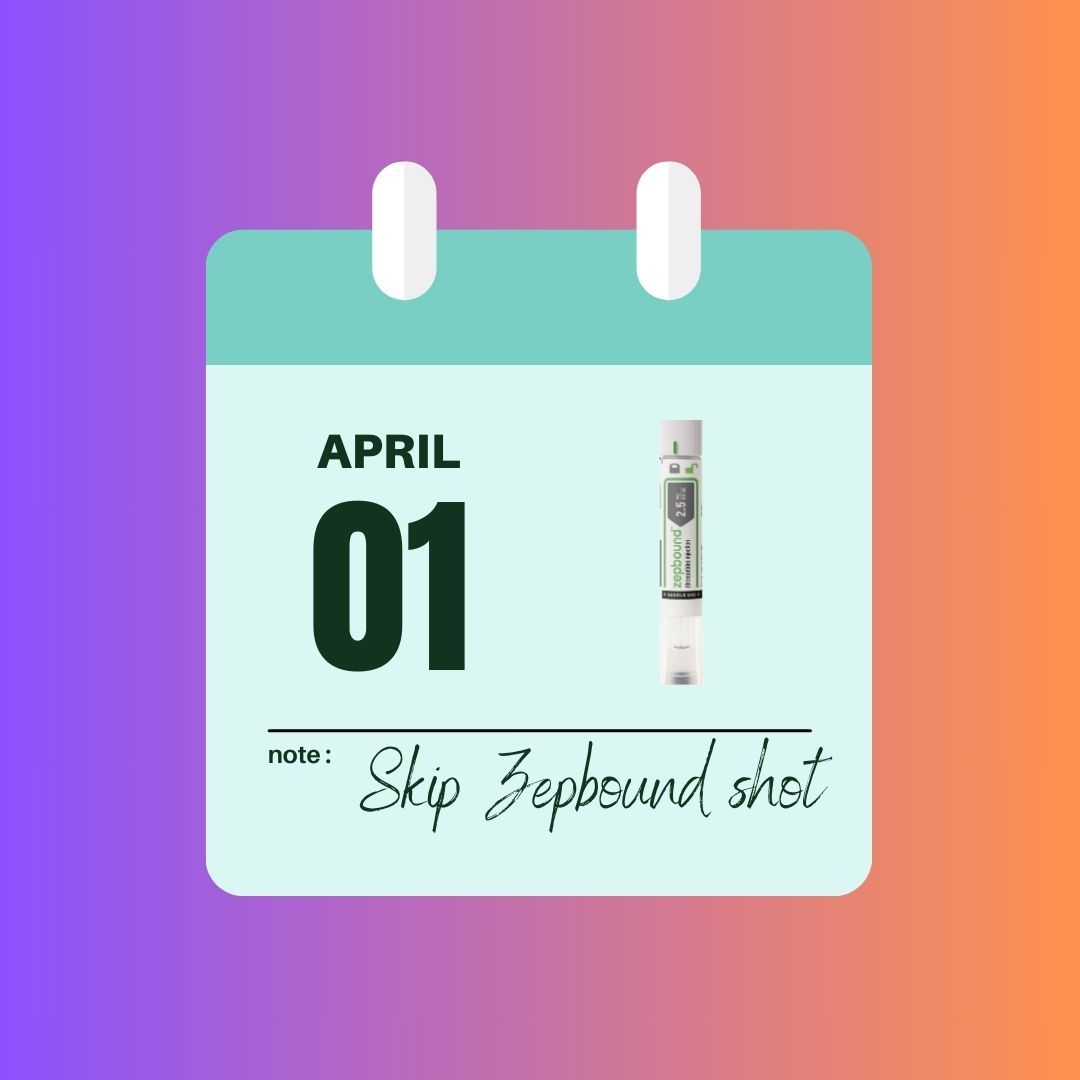Zepbound guide: What to know about this weight loss drug
I’m not saying that GLP-1 drugs work miracles, but for many, injections like Zepbound (tirzepatide) are helping them finally realize meaningful and lasting weight loss. This Zepbound guide answers the most common questions about tirzepatide.

What is Zepbound?
Zepbound (tirzepatide) is what’s called a “dual agonist” drug. The compound consists of two incretin hormones: GLP-1 and GIP. GLP-1 is a glucagon-like peptide-1 and GIP is a gastric inhibitory polypeptide.
Your body actually already produces GLP-1 and GIP hormones. The intestines create both after you eat foods that can be broken down into sugar (glucose) and nutrients. This goes on to stimulate the pancreas to create, store, and release insulin.
What pharmaceutical company makes Zepbound?
Lilly, a U.S.-based pharmaceutical company, developed Zepbound (tirzepatide).
Is Zepbound and Mounjaro the same drug?
Yes. Lilly developed tirzepatide first to treat Type 2 diabetes. The U.S. Food and Drug Administration approved the medication under the brand name Mounjaro. Weight loss was a positive side effect for patients taking Mounjaro.
The company then went into clinical trials to test tirzepatide’s veracity as a weight loss medication. In late 2023, the FDA approved tirzepatide under the brand name Zepbound specifically to treat obesity.
While the drugs have different names and are marketed to treat different diseases, the active medication inside the injection pens is identical. And the injection pens, at least in the U.S., are the same for both drugs. (At Lilly’s Q1 earnings call in April 2024, it announced a multidose Mounjaro Kwikpen option for users in Europe.)
Will doctors prescribe Mounjaro for weight loss?
Some doctors may prescribe Mounjaro for weight loss instead of Zepbound if you also have other medical issues (such as being pre-diabetic). However, the drug is primarily prescribed to treat Type 2 diabetes.
Many insurance plans also won’t approve coverage for Mounjaro if it’s solely being used for weight loss, even if the patient is obese. In those cases, ask your pharmacy benefits manager if Zepbound or another GLP-1 drug, such as Wegovy or Saxenda, is covered. (Note: For most weight loss drugs, your doctor will have to fill out a prior authorization request.)
When did the FDA approve Zepbound and Mounjaro?
The U.S. Food and Drug Administration (FDA) approved Zepbound (tirzepatide) for weight loss in November 2023. The FDA approved Mounjaro (tirzepatide) to treat Type 2 diabetes in May 2022. Same drug marketed to treat two different diseases.
How does Zepbound help someone lose weight?
Zepbound/Mounjaro (tirzepatide)’s GLP-1 and GIP receptor agonists help you lose weight. Part of the drug slows your “gastric emptying.” Basically, it slows down how your stomach digests food. This, in turn, means your stomach sends messages to your brain that say, “I am full.” This cuts back on the calories you eat because you don’t feel hungry. Both agonists help release insulin and regulate your blood sugar.
Does Zepbound/Mounjaro work instantly?
While tirzepatide begins to work quickly (it’s fully absorbed in your body 24 hours after your subcutaneous injection), it may take four to six months before you realize the drug’s maximum benefits.
How much weight can I lose with Zepbound?
I lost 32 pounds in the first 19 weeks of Zepbound injections.
According to Lilly, in a clinical study of adults without diabetes that lasted 72 weeks, subjects followed a reduced-calorie diet and increased their physical activity.
Here’s the average weight loss for different Zepbound doses:
- 15% (34 pounds) on 5mg of Zepbound
- 19.5% (44 pounds) on 10mg of Zepbound
- 20.9% (48 pounds) on 15mg of Zepbound
- 3.1% (7 pounds) on the placebo
Everyone loses weight at a different pace. At the beginning of the process — especially if you have a lot of weight to lose — it’s safe to lose between half a pound and two pounds per week.
How is Zepbound dosed and delivered?
Everyone starts Zepbound with a four-week regimen of 2.5mg. Some people refer to this as the “loading” dose. After the first four weeks on 2.5mg, you and your doctor will determine if you’ll stay on that dosage or move up to 5mg.
Note that some insurers will only pay for one box each of 2.5mg, 7.5mg, and 12.5mg Zepbound per calendar year. This is because these doses are not labeled as “maintenance” doses by the manufacturer. If your insurance policy carries that stipulation, you must decide if you’ll pay out of pocket using Lilly’s savings card (more on pricing below) or titrate up to the next dose, which the insurance company will cover.
After 5mg, Zepbound’s dosing moves to 7.5mg, 10m, 12.5mg, and 15mg.
The medication — no matter what dose — is self-administered subcutaneously once a week with an easy-to-use injection pen.
Where do I inject Zepbound?
There is a chart on the inside cover of the Zepbound box that shows the locations where you should inject the medication once weekly. You should rotate your injection site each week.

You can self-inject in your thighs and stomach (two inches away from your belly button). If someone else is handling your medication, they can inject it into the back of your upper arms.
Does a GLP-1 weight loss injection like Zepbound hurt?
No. I’m squeamish with needles and I was pleasantly surprised by how easy it is to inject this medication. Sometimes, I don’t feel anything at all (if I put an icepack on the area I plan to inject for a few minutes before the shot) and other times, I feel a very subtle “pinch.” The injection takes a few seconds, but I hold the pen against my skin for a full 10 seconds while waiting for the pen’s second “click.” This signals that your medication has been delivered.
Why rotate the injection site?
All GLP-1 weight loss injection medications recommend rotating your injection site each week. This ensures that you won’t damage tissue by injecting in the exact same spot week after week.
You can, however, move the site around specific areas of your body. For example, you can map out a circle around your stomach and have multiple injection sites. The same goes for your thighs and the back of your arms. (You need someone to inject you if you’re using the back of your arms.)
What are Zepbound’s most common side effects?
These are the most common side effects that you may experience when taking Zepbound. However, you may also not have any side effects. The drug affects different people in different ways.
- Nausea
- Diarrhea
- Vomiting
- Constipation
- Stomach (abdominal) pain
- Indigestion
- Injection site reactions
- Fatigue
- Allergic reactions
- Belching (sulfur burps)
- Hair loss
- Heartburn
Side effects can be more common when first titrating up to a higher dose. Many users notice an improvement as their system gets used to the new dosage. Some people experience side effects throughout the treatment, while others do not.
What are the known risks associated with Zepbound?
There are some possible significant side effects of which to be aware.
Do not take Zepbound if…
- you or anyone in your family has ever had medullary thyroid carcinoma (MTC) cancer.
- you have Mulitple Endocrine Neoplasia syndrome type 2 (MEN 2).
Additional side effects that are possible include:
- Severe stomach problems
- Kidney failure
- Gallbladder problems
- Pancreatitis (inflammation of the pancreas)
- Serious allergic reactions
- Hypoglycemia (low blood sugar)
- If you have Type 2 diabetes: Changes in vision
- Depression or suicidal thoughts
Call your doctor to discuss any side effects you encounter, especially if they are causing you pain.
Who can take Zepbound (tirzepatide)?
Children under the age of 18 are not eligible to take Zepbound. And, as mentioned above, you shouldn’t take Zepbound if you or someone in your family has a history of MTC thyroid cancer or if you have an endocrine system condition called MEN 2. And, if you do start tirzepatide and have a serious allergic reaction, your doctor will likely tell you to discontinue treatment.
Will I need to take Zepbound for the rest of my life?
We will know more about the long-term use of Zepbound as additional clinical studies are completed. However, right now, Zepbound is indicated for long-term use. During maintenance, you will find the right dosage for your body and you will lengthen the time between doses. So while people working toward that goal weight take a weekly injection, someone on maintenance may take a dose every two, three, or four weeks.
Studies show that people do regain weight after stopping Zepbound. This makes sense if they were an ideal patient for this drug in the first place. Zepbound helps people who have been able to lose weight before but not keep it off as well as those who were never able to lose weight despite a reduced-calorie diet, behavior modification, and exercise.
Zepbound’s use of GLP-1 and GIP hormones is the secret sauce for many individuals and those people may likely find that they need to take a maintenance dose to keep the weight from creeping back on.
What kind of doctor prescribes Zepbound?
Talk with your primary care doctor to find out if Zepbound or any GLP-1 weight loss drug is right for you. If your doctor doesn’t specialize in weight loss, and many do not, look for an endocrinologist or a clinic specializing in weight management. Or, consider a telehealth option, such as Weight Watchers Clinic, Form, or Noom.
How much does Zepbound cost?
What you’ll pay for Zepbound varies depending on your situation: if you have commercial insurance (like a plan from your employer), if your plan covers weight loss drugs or not, if you use the manufacturer’s savings coupon, or if you pay completely out of pocket.
Cost of Zepbound without commercial insurance
Without insurance or the manufacturer’s savings card (see below), Zepbound costs $1,060 per month. Mounjaro costs $1,020 per month. Competing weight loss drug Wegovy, developed by Novo Nordisk, costs $1,350 per month. Wegovy is approved for weight loss, while the exact same drug is sold to treat Type 2 diabetes under the name Ozempic.
Cost of Zepbound with the manufacturer’s savings coupon
Lilly offers a savings card to lower Zepbound’s monthly cost. However, you must have commercial insurance. You cannot use the savings coupon if you do not have insurance or if you have Medicare, which does not cover weight loss drugs.
If your commercial insurance doesn’t cover weight loss medications, the savings card brings the cost of Zepbound down to $550 for a one-month supply (four injection pens).
If your commercial insurance partially covers the cost of Zepbound, you can use the savings coupon to bring the cost down to less than $550. The exact amount you pay depends on your insurance plan coverage, but it can be as low as $25 per month.
Why can’t Medicare recipients use the Zepbound savings coupon?
Title XVIII of the Social Security Act prevents Medicare from paying for most anti-obesity treatments. However, some U.S. senators and congressional representatives are trying to amend that by passing the 2023 Treat and Reduce Obesity Act (H.R.4818 in the House and S.2407 in the Senate).
The bill expands Medicare coverage of intensive behavioral therapy for obesity. Specifically, the bill allows coverage for therapy that is provided by
- (1) a physician who is not a primary care physician;
- or (2) other health care providers (e.g., physician assistants and nurse practitioners) and approved counseling programs, if provided upon a referral from, and in coordination with, a physician or primary care practitioner.
You can contact your senators and congressional representatives to ask them to support the Treat and Reduce Obesity Act. Use the Obesity Action Committee’s online tool to find your state senators and representatives. Then use the provided sample letter to contact them and lobby for their support of H.R.4818 (House bill) and S 2407 (Senate version).
Is there a Zepbound/Mounjaro shortage?
Yes. It’s not super easy to get these drugs as of May 2024. Manufacturer Lilly said during its Q1 2024 earnings call in April that the demand for tirzepatide (Zepbound and Mounjaro) will outpace supply well into 2025. If your doctor prescribes Zepbound or Mounjaro, you need a plan to ensure you can get the medication when you need it.
How can I learn more about Zepbound?
Visit Lilly’s Zepbound website to learn more.
The wrap-up
Zepbound is one of many GLP-1 incretin-based drugs that are FDA-approved for weight loss. This is the medication my endocrinologist prescribed for me and I’ve been pleased with the results. My inflammation has gone way down and I lost 8.5% of my body weight in the first 12 weeks of treatment. I hope I can continue to find Zepbound and stay on course.
Are you talking Zepbound or another GLP-1 drug? I’d love to hear about your experience. Email me or post to the Shots to Shed Pounds Facebook page.






